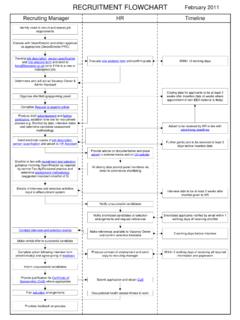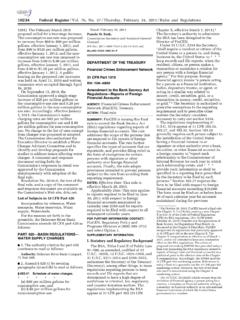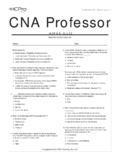Transcription of RLD HEALTH ORGANIZATION Global Task Force on Cholera ...
1 WORLD HEALTH ORGANIZATION Global Task Force on Cholera control Cholera country profile : ZAMBIA Last update: 3 february 2011 1 of 2 General country Information: The Republic of Zambia is a landlocked country sharing borders with the Democratic Republic of Congo, Tanzania, Malawi, Mozambique, Zimbabwe, Botswana and Namibia. The country is divided into nine provinces which are further subdivided into 73 districts. Its capital and largest city is Lusaka. Zambia formerly a British protectorate under the name of Northern Rhodesia gained its independence in 1964. Zambia's economy has been traditionally dominated by the copper mining industry. Since the 70's, Zambia started facing economical difficulties and progressively entered into poverty from which it has not recovered despite strong growth in the recent years.
2 Zambia's Human Development Index is 164 out of 182. Cholera Background History: The first outbreak of Cholera was reported in the country in 1977/1978, then cases appeared again in 1982/1983. The first major outbreak occurred in 1990 and lasted until 1993. Since then Cholera cases were registered every year except in 1994 and 1995. Generally most cases are recorded in the fishing camps of the rural areas and in the peri-urban areas of Lusaka and Copperbelt provinces. In Lusaka, cases and deaths mostly appear in the western suburbs of the city where access to safe water and good sanitation is poor. The observed ongoing Cholera occurence in Zambia corresponds to the progressive decline in the economy which started in the late 70's early 80's and still persists. Cholera situation in 2009/2010: The current outbreak started during week 43 (19-25 Oct 2009) with cases initially recorded in 4 provinces: Southern, Lusaka, Copperbelt and Northern.
3 A total of 6'804 cases were reported until 31 July 2010. Persistent rains and flooding aggravated the situation in Lusaka which recorded 4'464 cases and 73 deaths from 1 January until 28 March 2010. (CFR ) Cholera situation in 2010/ 2011 : Cholera cases started to be reported during week 45 (7 Nov 2010) in Lusaka. As of 16 January 2011 , 173 cases were reported from Lusaka, Southern and Northern provinces. ZAMBIA - WHO NOTIFIED Cholera CASES1978 - 2010*As of 8 April 2010020004000600080001000012000140001600 0197819791980198119821983198419851986198 7198819891990199119921993199419951996199 7199819992000200120022003200420052006200 7200820092010 YEARCASES ADN DEATHS020406080100120 CFR%DeathsCasesCFR Association between Cholera epidemics and rainfall in Lusaka (2003-2009) Analysis of available rainfall and epidemic data in Lusaka shows a very strong association between rainfall and epidemic outbreaks in the city.
4 Outbreaks usually start during the month of October and end between mid-May/beginning of June of the following year corresponding to the rainy season. WORLD HEALTH ORGANIZATION Global Task Force on Cholera control Cholera country profile : ZAMBIA Last update: 3 february 2011 2 of 2 Demographic and Socio-Economic Data: Sources for Document: WHO, UNHCR, OMS/UNICEF(JMP), UNDP Geography Total surface Capital Provinces Official Language 752,614 km Lusaka (population in Lusaka: 3'100'000 in 2007) 9 provinces: Central, Copperbelt, Eastern, Luapula, Lusaka, Northern, North-Western, Southern, Western (73 districts) English Environment Climate Rainy season Floods and droughts Environment Natural resources Tropical modified by elevation Rainy season (November to April).
5 Dry season (May to November) Floods dominates the natural environment and lives throughout the country Deforestation, desertification, lack of adequate water treatment presents human HEALTH risks Copper, cobalt, zinc, lead, coal, emeralds, gold, silver, uranium, hydropower Demographics Population Religions Ethnic groups Migrants 11,862,740 (annual population growth rate: ) Christian 50%-75%, Muslim and Hindu 24%-49%, indigenous beliefs 1% African (includes Bemba, Tonga, Chewa), other (incl. Europeans, Asians, and Americans) 150'000 refugees (Angola, DRC, Rwanda, Burundi, Somalia) (2005) Economy Industry Farming Copper mining and processing, construction, foodstuffs, beverages, chemicals, textiles, fertilizer, horticulture Corn, sorghum, rice, peanuts, sunflower seed, vegetables, flowers, tobacco, cotton, sugarcane, tapioca, coffee.
6 Cattle, goats, pigs, poultry, milk, eggs, hides HEALTH Indicators Per capita total expenditure on HEALTH (US$) Life expectancy birth (yrs) Child mortality (per 1000) under five 36 (2005) Males: 42 Females: 43 (2006) Males: 190 Females: 173 (2006) 10 physicians per 100'000 Communicable Diseases Food or waterborne diseases: bacterial and protozoal diarrhea, hepatitis A, and typhoid fever Vector borne diseases: malaria and plague are high risks in some locations Water contact disease: schistosomiasis Animal contact disease: rabies (2009) HIV prevalence (2007): Risk Factors for Cholera Population with access to improved water source rural: 41% urban: 90 % (2006) Population with access to proper sanitation facilities rural: 51% urban: 55% (2006) Children under five years of age underweight for age (2002) WHO Support Actions: 2003-2004: WHO provided medical supplies and supported local HEALTH staff.
7 In addition, a WHO mission comprising an epidemiologist and a water and sanitation engineer assessed the situation and proposed additional control measures. The Cholera Task Force country profiles are not a formal publication of WHO and do not necessarily represent the decisions or the stated policy of the ORGANIZATION . The presentation of maps contained herein does not imply the expression of any opinion whatsoever on the part of WHO concerning the legal status of any country , territory, city or areas or its authorities, or concerning the delineation of its frontiers or boundaries.
















